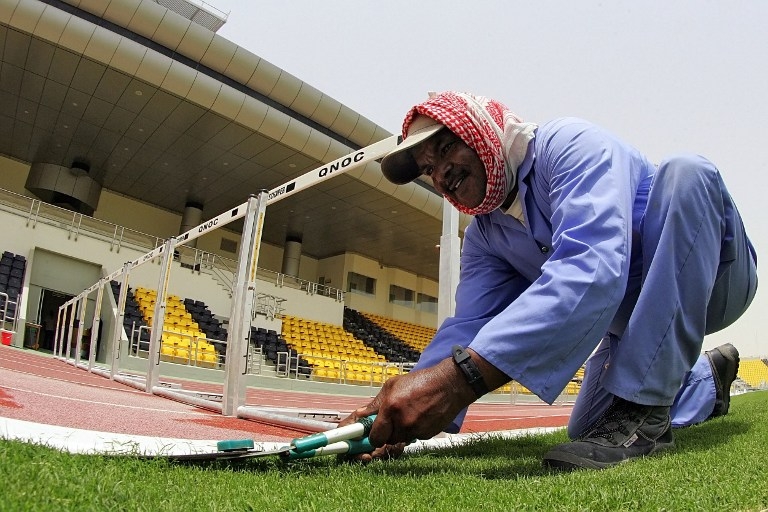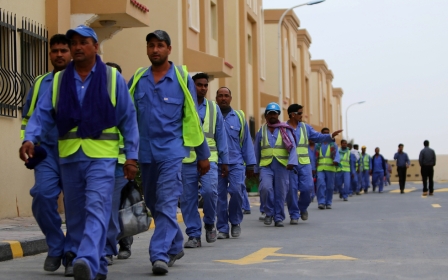Nearly 60 percent of Qatari population live in 'labour camps'

Almost 60 percent of Qatar's 2.4 million population live in what the government calls "labour camps," figures from an April 2015 census showed on Sunday, highlighting the issue of the emirate's huge migrant workforce.
The figures from the Ministry of Development Planning and Statistics (MDPS) revealed that 1.4 million people live in what the department officially designates as "labour camps".
At the time of the survey, the official population was 2.4 million. That works out at just over 58 per cent of the country's population.
The overwhelming majority - 1.34 million - were male, the statistics found.
Since the census, Qatar's population has grown further to just over 2.5 million.
It was not immediately clear why the survey results only came to light on Sunday.
The accommodation of migrant labourers working on Qatar's numerous infrastructure projects has long been a contentious issue.
Qatar, which will host the football World Cup in 2022, has been condemned by human rights groups, including Amnesty International, for providing "squalid and cramped accommodation" for its large migrant workforce.
On 2 June, 11 people were killed and 12 injured when a fire ripped through a camp housing labourers working on a tourism project in the southwest of the country.
In late March, Amnesty released a report, based on interviews with 132 migrant workers in 2015 who were working on World Cup projects, which found that abuse, including forced labour and poor living conditions, had continued despite promises from organisers and the state to improve conditions.
Abuses documented in the report included the withholding of passports, the ongoing practice of interest-bearing "recruitment" loans, deception over pay rates and work undertaken, the denial of rights to travel home, and physical and verbal abuse by managers.
"My life here is like a prison. The work is difficult, we worked for many hours in the hot sun," one Nepali man told Amnesty.
"When I complained, the manager said ‘there will be consequences. If you want to stay in Qatar be quiet and keep working’.”
FIFA responded to the report saying that progress was being made, while Qatar said it was committed to reform.
Qatar has responded to the criticism by building new workers' housing complexes, including the $825mn "Labour City" south of the capital Doha, which incorporates shops, cinemas and a cricket stadium.
The complex can house up to 70,000 foreign workers and is one of seven workers' "cities" being developed which will accommodate almost 260,000 people in total.
The population of gas-rich Qatar has soared over the past three decades as it has imported a huge migrant workforce to develop its infrastructure. In 1986, just 373,000 people lived in the emirate.
Middle East Eye propose une couverture et une analyse indépendantes et incomparables du Moyen-Orient, de l’Afrique du Nord et d’autres régions du monde. Pour en savoir plus sur la reprise de ce contenu et les frais qui s’appliquent, veuillez remplir ce formulaire [en anglais]. Pour en savoir plus sur MEE, cliquez ici [en anglais].




